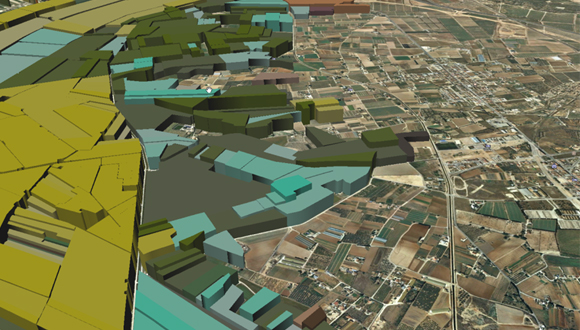You can help NASA to improve the quality of its data
CREAF has presented the final report of the European project GeoViQua, a project that will transform the global platform GEOSS in order to let users improve environmental data that provide organizations like NASA or FAO. Now users can also check the quality of environmental data. A specialized search engine and a color-coded label will help people to choose the most reliable data from all available..

After three years of scientific work, CREAF as the coordinator and the other project partners of GeoViQua, have presented to the European Commission (EC) its final report about Achievements and scenarios. From now on, and thanks to GeoViQua, all the users of the Global Earth Observation System of Systems (GEOSS) can find and view information about the quality, reliability and uncertainty hidden in the environmental data worldwide. The project has incorporated several innovations in the GEOSS portal with the aim of reporting on the level of reliability of environmental data available and help the user to choose the suitable for one project.
The GEO label is an example, a label with intuitive icons that will appear next to each map or data in GEOSS. The label will detail graphically if there is information about the organization that produced the map, if it meets international quality standards, if you have information about the uncertainty of the data, among others. Overall, the GeoViQua project has also developed a unique language to measure the quality of the data accumulated within GEOSS and has improved the search engine to perform searches that take into account the reliability of the data (QualityML.GeoViQua.org .)
The impact of this improvement is huge if you consider that the GEOSS platform collects baseline data on issues like health, energy, climate, water, weather, ecosystems, agriculture and biodiversity.
Up to now, the quality (or reliability) of the data was difficult to find, was not available or was not formalized. Therefore, it could not be ensured that the policy decisions or the management of the planet were taken with "the best available data" and so there was the risk of losing confidence in the earth observation data that international recognized entities provide.
You can help NASA to improve the quality of its data
The most revolutionary improvement of the GeoViQua project, without any doubt, is the incorporation of the user feedback on the platform. "Thanks to our project, the global network GEOSS will be a web 2.0 platform open to user participation. The system will allow to collect opinions on the quality of the data, rate them, make comments, write reports or propose new criteria, depending on the level of expertise of each partner", says Joan Masó, CREAF researcher who led the project. "If we integrate the knowledge of the users to the GEOSS platform, we will improve day by day the description of the data that provide such important institutions as NASA, FAO, the World Meteorological Organization and the European Environment Agency and we will learn new applications".
"With the innovations GeoViQua brings to the GEOOS portal we will be able toensure that decision making on environmental issues is taken on increasingly reliable information", says Joan Masó as the project coordinator.
GeoViQua, a project to improve the reliability of environmental data worldwide
GeoViQua involved the participation of 11 partners - most notably the Autonomous University of Barcelona, ??two English universities, French, Italian and German research centers, a Dutch company and the European Space Agency. The total cost has been about 4 million for 3 years, of which about 3 million have been funded by the European Commission.
In addition to the improvements in GEOSS, GeoViQua has left a legacy of a set of tools, many of them open source, which may be reused by other projects. The GeoViQua project will continue active beyond the period of funding, thanks to the standardization activities initiated by the Open Geospatial Consortium (OGC) and the Institute of Electrical and Electronics Engineers (IEEE) on the feedback of the data and the GEO label respectively, and to the intentions of CREAF of continue working on issues of data quality.
GEOSS is a project sponsored by 89 countries around the world, together with the European Commission and 77 international organizations - such as space agencies: NASA, ESA and JAXA. Its aim is to create a network of world public environmental data understandable and available in real time. Due to its increasing global impact, especially with regard to improving the policy making related to environmental issues, the EU is funding the best initiatives, like GeoViQua, to improve and advance in its development.







